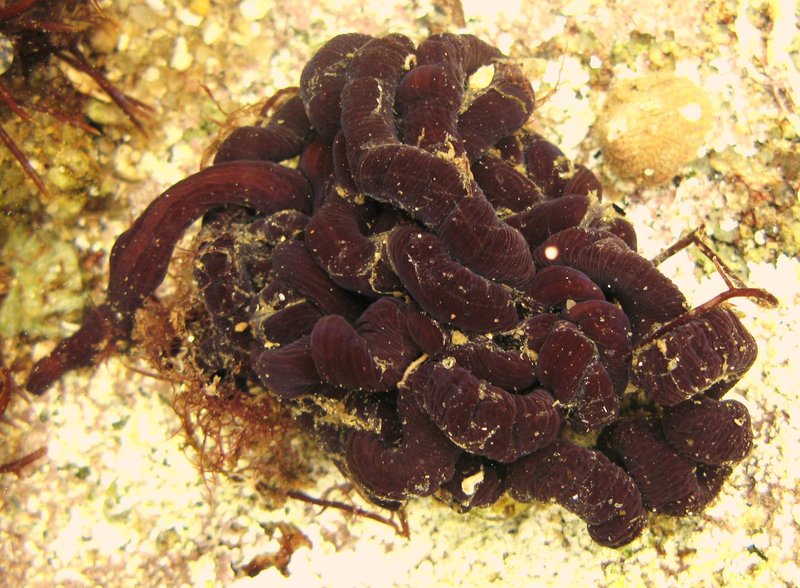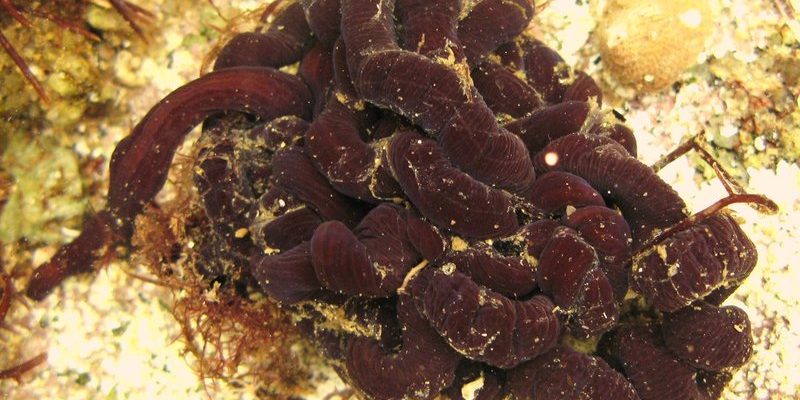
Imagine a spaghetti noodle, but instead of being served on your plate, it’s wriggling through the water, reaching out with specialized adaptations to catch its prey. That’s kind of what a bootlace worm does! It can be a bit unsettling to consider, but understanding its predatory habits offers insight into the food web of underwater life and highlights the biodiversity of our oceans.
So, let’s dive into the world of bootlace worms and explore how they interact with crustaceans and other invertebrates. We’ll explain how they hunt, what they typically eat, and why their role is significant in marine ecosystems.
Understanding the Bootlace Worm
Bootlace worms are not your average worms. In fact, they’re among the longest animals on Earth, potentially reaching lengths of up to 60 meters (about 197 feet)! They’re typically found in the colder waters of the North Atlantic, where they glide over the seabed, often hiding in seaweed or sand. But what sets them apart isn’t just their length; it’s their unique biology and hunting style.
These worms belong to the phylum Nemertea, which means they are part of a group that includes ribbon worms. Their bodies are soft and elongated, which allows them to maneuver through tight spaces easily. You might be wondering, *What do bootlace worms eat?* Well, they’re opportunistic predators, meaning they will eat whatever smaller creatures they can catch.
Their diet mainly consists of **crustaceans** (like crabs and shrimp), **polychaete worms**, and other small **invertebrates**. They use a specialized structure called a proboscis, which can extend and retract, to grab their prey quickly. This hunting method is a bit like a chameleon’s tongue—quick, efficient, and surprisingly effective.
How Bootlace Worms Hunt
Hunting for bootlace worms is a combination of stealth and speed. They don’t chase down food like some predators. Instead, they wait patiently and use their environment to their advantage. Imagine a skilled hunter lying in wait, camouflaged against the backdrop of the sea floor.
When a bootlace worm detects nearby prey, it can quickly extend its proboscis. This flexible appendage, lined with mucus and sometimes even sticky cells, helps it capture crustaceans as they scuttle by. Once the worm grasps its meal, it secretes enzymes that begin digesting the prey outside its body. It’s almost like it’s cooking dinner before eating!
Here’s a quick breakdown of their hunting process:
- Detection: The worm senses movement or vibration in the water.
- Capture: The proboscis shoots out to ensnare the prey.
- Dissolve: Enzymatic secretions break down the prey’s tissues.
- Consume: The worm absorbs the nutrients through its skin.
This method allows bootlace worms to prey on animals that might be larger or more agile than themselves, highlighting their role as efficient hunters in their ecosystem.
The Impact of Bootlace Worms on Ecosystems
Now, you might be asking, *Why does this matter?* Well, bootlace worms play a crucial role in the marine food web. By preying on crustaceans and other invertebrates, they control the populations of these species, ensuring that no single group becomes too dominant. This balance is essential for maintaining healthy marine ecosystems.
When bootlace worms thrive, they contribute to the biodiversity of their environment. In many ways, they are the unsung heroes of the ocean floor, performing their role without much fanfare. If bootlace worms were to disappear, the ripple effects could lead to overpopulation of certain species and subsequent decline in others, ultimately affecting everything from the smallest plankton to larger predators like fish and birds.
Additionally, their predation helps recycle nutrients back into the ecosystem. As bootlace worms consume and digest their prey, they release waste that can nourish the seabed—creating a more fertile environment for new life to flourish.
Common Prey of the Bootlace Worm
Bootlace worms are flexible eaters, but they have some common favorites when it comes to prey. Some of the more typical invertebrates they consume include:
- Small Crustaceans: Including species like shrimp and tiny crabs.
- Other Worms: Especially smaller polychaete worms that share their habitat.
- Mollusks: Weaker or smaller sea snails and bivalves can also fall victim.
These prey items have one thing in common: they are all part of the same ecosystem and interact with each other. This interconnectedness showcases the complexity of marine life.
It’s fascinating to think about how each creature, including the bootlace worm and its prey, contributes to a larger story of survival. These interactions are the threads that weave together the fabric of life under the waves.
Adaptations That Support Predation
Bootlace worms have developed some incredible adaptations to help them thrive in their predatory role. One of the most prominent features is their proboscis, which allows them to catch food effectively. But beyond that, their entire body structure is adapted to life as a predator.
Their soft bodies allow them to navigate through tight spaces, making it easier to hide from larger predators or to sneak up on their prey. Moreover, they can change their coloration slightly to blend in with their surroundings, which aids in ambush hunting.
Another interesting adaptation is their ability to reproduce quickly. Bootlace worms can regenerate lost body parts, which is crucial in the harsh marine environment where they may face predation themselves. By maintaining robust populations and diverse genetic traits, they secure their place in the food web.
It’s like a double-edged sword; not only do these adaptations make them effective hunters, but they also help ensure their survival in a world full of challenges.
Conservation and Future Considerations
The health of bootlace worm populations can serve as an indicator of the overall state of marine ecosystems. Unfortunately, like many marine species, they are affected by human activities such as pollution, habitat destruction, and climate change. These factors can alter their habitats and prey availability, ultimately impacting their populations.
Conservation efforts targeted at preserving marine environments also benefit bootlace worms and other invertebrates. Protecting coastal areas, reducing plastic waste, and regulating fishing practices contribute to healthier ocean ecosystems.
Everyone has a role to play—whether that’s reducing plastic usage, supporting sustainable seafood practices, or simply being more mindful about our impact on the ocean. It’s a shared responsibility, and the more we can understand these incredible creatures, the more we can appreciate their role in nature.
Bootlace worms are remarkable creatures that play a significant role in maintaining the balance of life under the waves. Their predation on crustaceans and other invertebrates showcases the intricate web of relationships that exist in marine environments. By understanding these connections, we can better appreciate the importance of conserving our oceans.
Next time you think about the ocean, remember the bootlace worm—the long, slithery predator that silently plays its part. It’s a reminder of how diverse and intricate life can be beneath the surface. And as we strive to protect our planet, let’s not forget that even the smallest creatures can have the largest impacts.

